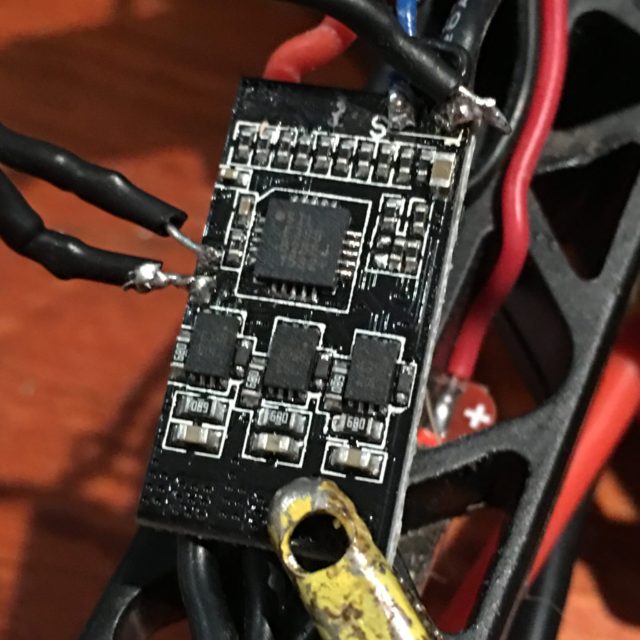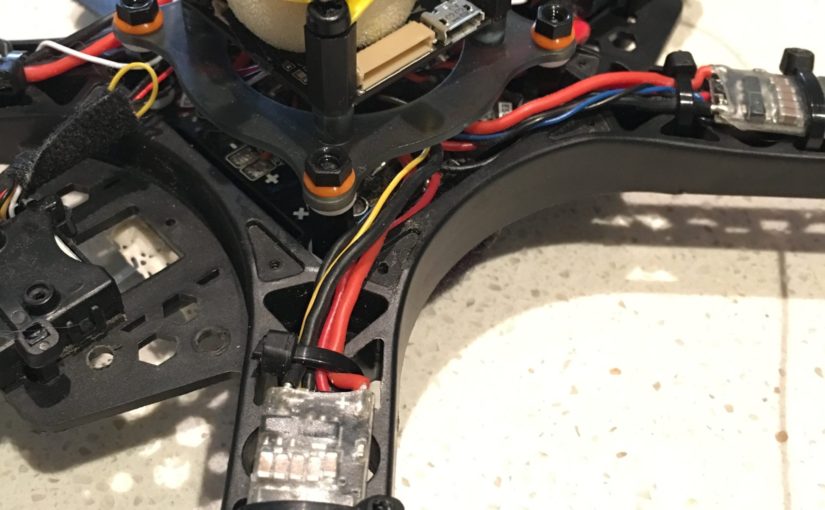When I bought these Emax Nano v2 20A ESCs I thought I was getting a bargain. In hindsight they have been the root of many hours of uncertainty and confusion. Once the “stock” BLHeli was replaced with the real BLHeli though it all came together.
That’s not BLHeli
There’s a dirty secret many ESC manufacturers don’t want to share. Their BLHeli (or SimonK) firmware isn’t exactly the same as the BLHeli/SimonK firmwares that your or I have access to. I can’t ascertain the exact reason “why” but needless to say it’s a pain for us all!
In the case of my Emax Nano v2 20A ESCs I’d held off flashing because they seemed to work OK out of the box, I didn’t know better, and before I got around to thinking about flashing they were already mounted. I was lazy!
The first hint that your ESC isn’t out-of-the-box plain BLHeli is that it won’t flash via the servo input. This means there’s no “boot loader” compatible with BLHeli installed. This locks you in to using the manufacturers flash dongle or not updating at all.
The first time is the hardest!
For the SiLabs chipset based ESCs the “C2” method I’ve previously described is the go-to method and it’s what I used to bring these EMax Nano v2 20A ESCs into the modern age of BLHeli 14.8.

For Atmel based ESCs you may need a USBASP programmer and some tricky soldering. I’ll probably be on that journey with some Turing Multistar Mini v2 18A ESCs soon.
All in all it took under 2 hours to:
- de-mount my ESCs
- solder on the temporary patch lines from the C2 terminals to my Arduino (using a pull-up arrangement as described in my other post)
- flash with the latest firmware which includes a boot loader. Now I will be able to use the 1-wire method in the future!
- finally re-wrap the ESCs and zip-tie back in place.
It’s worth it in the end!
When I reconnected the ESCs to the flight controller and started the calibration cycle I was immediately of the change. What had previously been a tedious juggle of guessing if the ESCs were calibrated or not was actually the lousy EMax firmware.
Under the new firmware they played a simple tune, beeped a few times and sat silent until I repositioned the throttle at the other end-point. Played another little tune and beeped out the battery capacity. After that the throttle was immediately available to use for testing.
Immediately I was stunned at how much smoother and balanced the motors sounded. Braking was enabled by default with the new firmware and really pulls up the motors quickly. I know my quadcopter is going to be flying so much better now!
The motor and ESC pair I thought id damaged beyond repair work flawlessly and start/stop and run up with he same smoothness as the other three!
